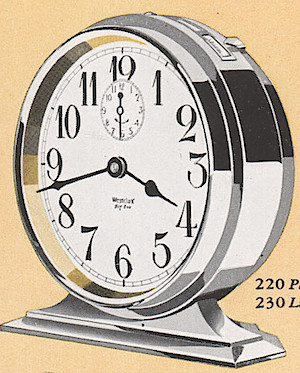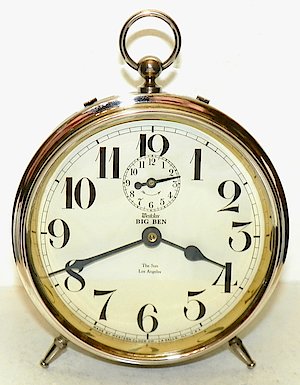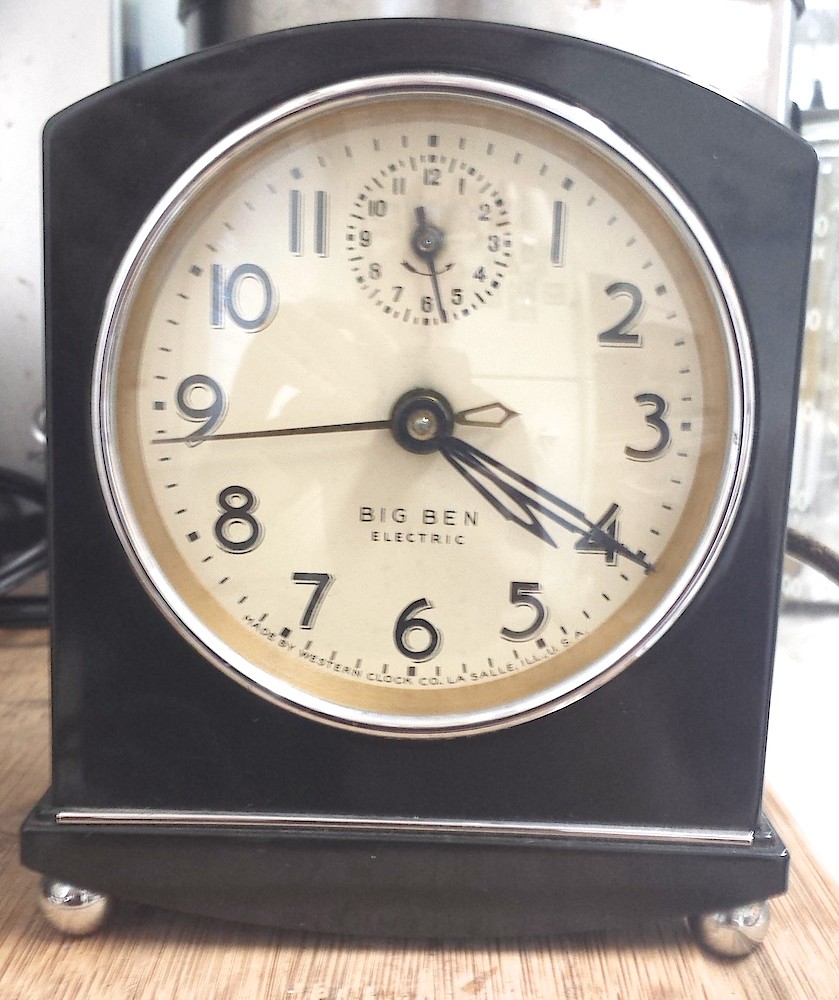
This clock has a single wind / mainspring for both the alarm and time mechanisms.After putting back in the case, it will only tick for a couple seconds max before it stops. Reassembled it all - got it ticking for a solid twenty minutes when it was just the movement, but moving it at all made it stop.It's not broken, but I noticed some minimal rust on the bottom of the barrel Opened up the barrel to check on the mainspring but decided not to mess with removing it without proper tools.

Lightly oiled per instructions I found on a Big Ben repair site.

However, the clock’s designers have been careful to keep the look recognizable: round or oval case (earlier ones with a ring handle on top), simple legs or pedestal, and easy-to-read dials.

To remain current, the design is updated periodically with a new case material or dial color or a different ring (the Loud Alarm models have an intermittent feature and a loud ring, for example, while the Chime Alarm models start out with a slow ding-dingding-ding-dingding and change to a steady ring if the alarm isn’t shut off).

LeRoy’s advertising referred to Big Ben as “he” and tried to make the clock appear as a friend or part of the family. had been associated with cheap alarm clocks so he recommended naming the new product “Big Ben” (let’s not forget the respected but unrelated Big Ben clock tower at the Palace of Westminster in London). According to the Westclox Big Ben and Baby Ben Identification Guide by Richard Tjarks and Bill Stoddard, LeRoy recognized that Western Clock Manufacturing Co. The first Big Ben ad, published in The Saturday Evening Post, was masterfully written, describing the clock as a “thin, beautiful and punctual sleepmeter with a silent motor that will not annoy you on your lie-awake nights and a deep musical voice that will call you on your sleepiest mornings.” Who could refuse?īig Ben and his little brother, Baby Ben, are the most popular alarm clocks ever sold, thanks in part to their design, performance and, notably, to a campaign developed by Gaston LeRoy, the company’s advertising manager. The price: $2.50 (a significant investment considering average workers made about $500 per year in 1910) and available only from jewelers. The company introduced the wind-up clock in 1909 and advertised it nationally for the first time in 1910. in Peru, Illinois, received a patent in 1908 for the “Big Ben” alarm clock movement, the first with a bell mechanism integral to the clock’s case rather than separate. Now Big Ben’s classic good looks are attracting new fans, even among those with a throw-the-blasted-thing-out-the-window relationship with alarm clocks.īig Ben has had a storied life. It was the Big Ben alarm clock that sat on your nightstand until digital clocks stole your heart away. It was the reason you woke up each morning, the first sound you heard, the first thing you reached for and, no, it wasn’t your spouse.


 0 kommentar(er)
0 kommentar(er)
